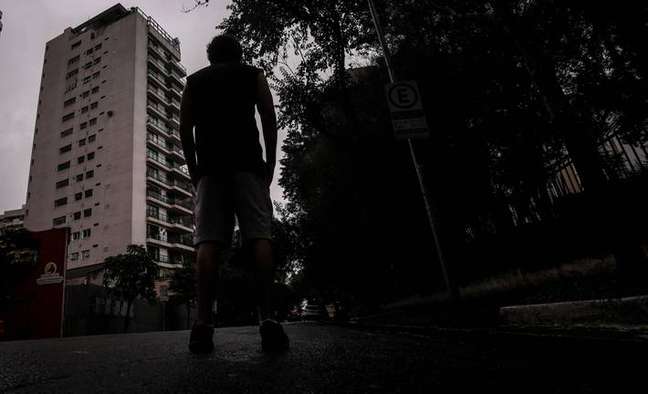The procedure is complex and the recovery is long; Experts warn that patients seeking treatment for aesthetic purposes should be well oriented
Two years ago, Marcelo Rodrigues (not his real name), 35, was subjected to a bone lengthening surgery and went from 1.67 m in height to 1.72 m. “For other people, five centimeters may seem small, but for me it was something that changed my life. Today I feel much better about myself,” says he, who only underwent the procedure for cosmetic purposes. Regulated for more than half a century in Brazil, surgery, according to the Federal Council of Medicine (CFM), is more indicated for the restoration of bone defects resulting from fractures, infectious and tumor processes, and in cases of congenital diseases that cause asymmetry between the limbs.
Because it is a complex treatment and takes a long time to recover, the physically normal patient must be aware that there are significant risks to consider, explains Guilherme Pelosi Gaiarsa, chair of the bone reconstruction and lengthening committee at Brazilian Society of Orthopedics and Traumatology (SBOT).
The treatment is commonly used medicinally in people with dwarfism and patients who have lost part of their leg or have suffered some bone deformity. In these two cases, surgery is considered a necessity and, therefore, health insurance coverage exists as well Single health system (SUS).
“In patients with dwarfism, the goal is not for the person to reach a height that is considered standard, but for them to gain freedom of movement and be able to carry out daily activities more easily,” explains Gaiarsa.

Hernandes Augusto, 38, a machine operator, had to undergo the procedure after suffering an accident at work, with a shortened leg and impaired locomotion. “I had to put a lot of strain on my hip, ankle and knee to walk,” he says.
After stretching, Augusto started to walk better, which affected his quality of life, but he recognized the complexity of the treatment.
How does bone stretching work?
The bone lengthening process takes an average of 50 days, and full recovery takes about six months. First a surgery is performed in which the orthopedic doctor makes a cut in one of the bones of the leg (femur or tibia, but usually in the femur, as it has a greater elongation capacity) and places an external fixator that has metal rods capable of bone regulation, in a system similar to orthodontic appliances.
Thus, with the manipulation of the nails, which can have different models, from the most modern and expensive to the simplest and cheapest, the two parts of the bone slowly separate, encouraging the patient to gain a few centimeters as the organ regenerates. . .
“We perform this process on both legs at the same time to reduce the risk of one being smaller than the other and we guide the patient so that he does the adjustment of the rods daily. On average, we stretch one millimeter a day,” explains Reinaldo Keitiro Katayose, an orthopedic doctor specializing in stretching and bone reconstruction.
During and after bone lengthening, the patient must undergo months of physical therapy so that the leg muscles maintain growth. The size of the stroke varies from person to person, but it usually is about five centimeters.
“It all depends on the preoperative exams and how the patient reacts to the process,” says David Mello Marin, orthopedist who also specializes in stretching and bone reconstruction.
The surgery starts at R $ 35,000, but can reach more than R $ 1 million, depending on the type of fixer used. The procedure can also be done on the arm bones, although it is less common among patients who wish to increase their height. “In physically normal people, the biggest difference in size is due to the leg bones. Generally, the arms and torso of people of different height are similar in size, so the patient is not at risk of being out of proportion by only increasing the leg bone. . “, explains Marino.
Scratches
In addition to pain and the long recovery period, bone lengthening surgery involves risks common to any surgery, such as infections, but also specific ones, such as nerve injuries from compression or stretching, joint stiffness and deformity due to the pressure of the stretched muscles and secondary bone deformities on the elongated bone.
According to Anastácio Kotzias, coordinator of the Technical Chamber of Orthopedics of the CFM, the procedure can also cause vascular, neurological and functional problems (limited mobility), “generally related to the amount of correction to be obtained, ie the size of the bone lengthening”.
“For a patient who has a deformity and suffers from it on a daily basis, the risks pay off, as long as all necessary care is taken and preoperative examinations are performed,” says Gaiarsa. “Now, the physically normal patient needs to be well oriented, so that he can clearly assess whether he is willing to take the risk of acquiring an orthopedic problem for aesthetic reasons. Aesthetic, who ignores the risks.”
For Marin, the procedure should only be performed on a physically normal patient after a series of tests showing that he is healthy and has a bone structure that can resist stretching. “I have a very rigorous preoperative process and I make sure the patient is aware of all the risks involved before performing the procedure,” she says.
Surgery is not indicated for smokers, obese patients, or patients with other health problems, depending on medical evaluation.
Self-esteem
Marcelo Rodrigues says he studied a lot before opting for a treatment for aesthetic purposes. “I’ve been looking for a qualified doctor for this,” he says, who reports that he never felt comfortable with his height.
“Ever since I was a teenager, my friends have been joking about my height. Plus, I feel that women aren’t that attracted to short men, which directly reflects on my self-esteem,” she says.
In addition to people who want to be taller for reasons of self-esteem, it is common for people who want to pursue a sports career or as a model also look for the procedure to achieve the required height in these professional fields.
According to one published study to National Library of Medicine in 2017 there is a noticeable improvement in patients’ self-esteem after the procedure, but this could be short-lived – around a year. After seven years of height gain, most of the 28 patients followed in the study returned to near-preoperative self-esteem levels, according to the research.
+The best content in your email for free. Choose your favorite Earth Newsletter. Click here!
Source: Terra
Benjamin Smith is a fashion journalist and author at Gossipify, known for his coverage of the latest fashion trends and industry insights. He writes about clothing, shoes, accessories, and runway shows, providing in-depth analysis and unique perspectives. He’s respected for his ability to spot emerging designers and trends, and for providing practical fashion advice to readers.




![Tomorrow Belongs to Us: What’s in store for Friday 17 October 2025 Episode 2055 [SPOILERS] Tomorrow Belongs to Us: What’s in store for Friday 17 October 2025 Episode 2055 [SPOILERS]](https://fr.web.img5.acsta.net/img/96/95/96957c8eef9a3bd87daf877432629ae3.jpg)



